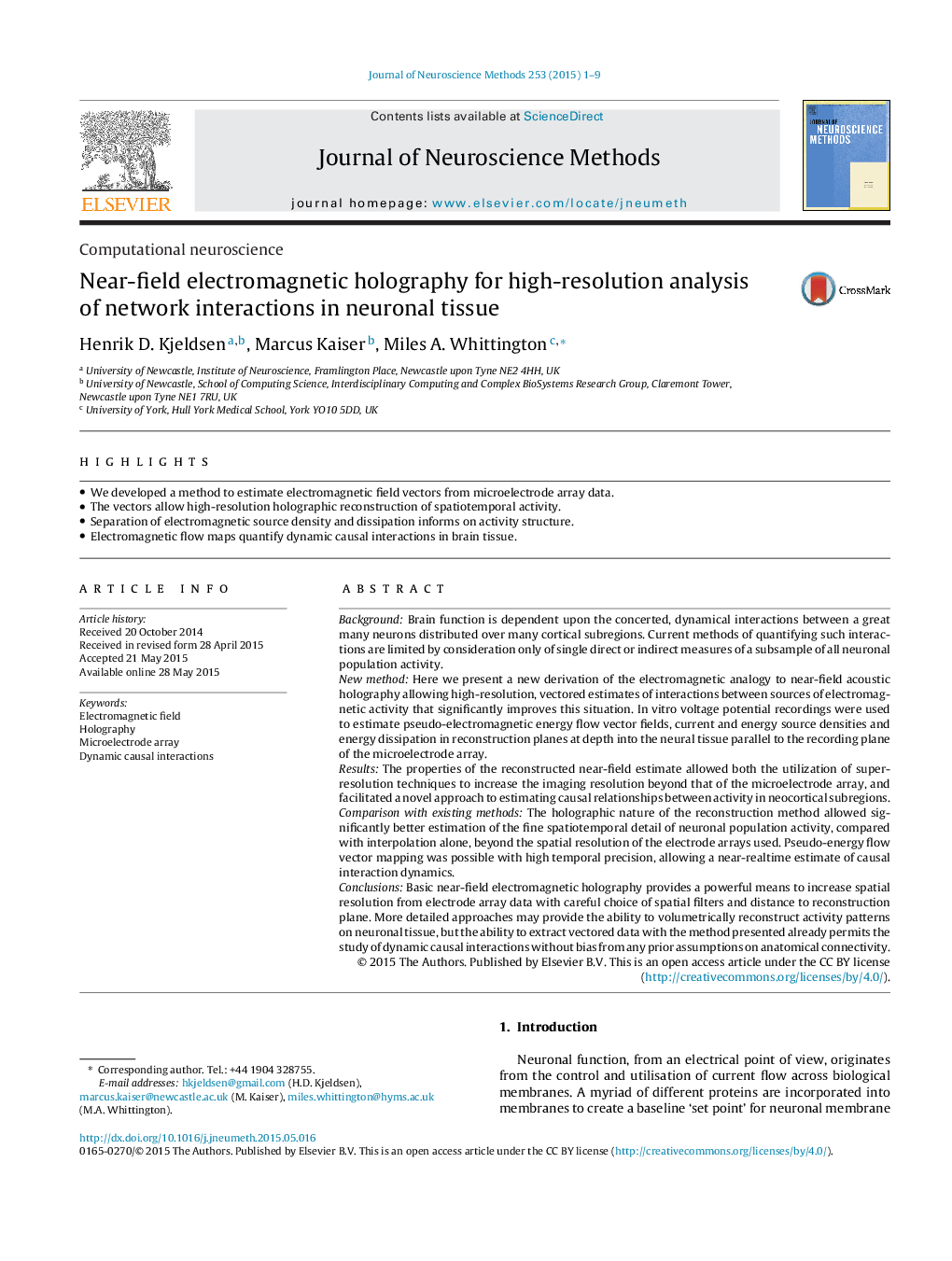| Article ID | Journal | Published Year | Pages | File Type |
|---|---|---|---|---|
| 6268025 | Journal of Neuroscience Methods | 2015 | 9 Pages |
â¢We developed a method to estimate electromagnetic field vectors from microelectrode array data.â¢The vectors allow high-resolution holographic reconstruction of spatiotemporal activity.â¢Separation of electromagnetic source density and dissipation informs on activity structure.â¢Electromagnetic flow maps quantify dynamic causal interactions in brain tissue.
BackgroundBrain function is dependent upon the concerted, dynamical interactions between a great many neurons distributed over many cortical subregions. Current methods of quantifying such interactions are limited by consideration only of single direct or indirect measures of a subsample of all neuronal population activity.New methodHere we present a new derivation of the electromagnetic analogy to near-field acoustic holography allowing high-resolution, vectored estimates of interactions between sources of electromagnetic activity that significantly improves this situation. In vitro voltage potential recordings were used to estimate pseudo-electromagnetic energy flow vector fields, current and energy source densities and energy dissipation in reconstruction planes at depth into the neural tissue parallel to the recording plane of the microelectrode array.ResultsThe properties of the reconstructed near-field estimate allowed both the utilization of super-resolution techniques to increase the imaging resolution beyond that of the microelectrode array, and facilitated a novel approach to estimating causal relationships between activity in neocortical subregions.Comparison with existing methodsThe holographic nature of the reconstruction method allowed significantly better estimation of the fine spatiotemporal detail of neuronal population activity, compared with interpolation alone, beyond the spatial resolution of the electrode arrays used. Pseudo-energy flow vector mapping was possible with high temporal precision, allowing a near-realtime estimate of causal interaction dynamics.ConclusionsBasic near-field electromagnetic holography provides a powerful means to increase spatial resolution from electrode array data with careful choice of spatial filters and distance to reconstruction plane. More detailed approaches may provide the ability to volumetrically reconstruct activity patterns on neuronal tissue, but the ability to extract vectored data with the method presented already permits the study of dynamic causal interactions without bias from any prior assumptions on anatomical connectivity.
